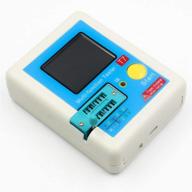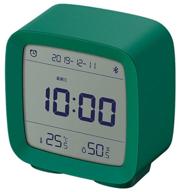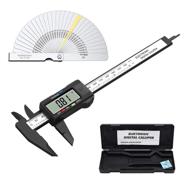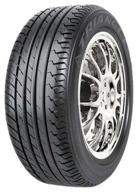
Review on 🔍 CPS VG200: Accurate Vacuum Gauge with Digital LCD Display by Ryan Hadden

Vacuum requires patience.
First, the polarity of the battery installation is clearly marked by having one copper terminal on the device wider than the other. You simply fit the wider lead of your 9 volt battery into the meter's battery slot with the wider copper lead. Second, to those who say these devices leak, do you really know how the micrometer reacts after the vacuum pump shuts off? Or has air/nitrogen/refrigerant/moisture entered the cooling oil? Vacuum gauges were never designed to detect leaks and they are not leak detectors. It measures the vacuum. I can pull a vacuum below 500 microns with a decent leak. Depending on the size of the system, it may take some time before a leak appears on the micrometer. When you create a vacuum in a system containing hundreds or even thousands of pounds of refrigerant, it can take days or weeks for a micrometer leak to appear. You just don't know if a leak, moisture or other non-condensables will get into the refrigerant oil. It takes years of experience to determine with sufficient accuracy whether the lack of a decent vacuum is due to a leak, non-condensation, refrigerant or nitrogen oil traps, or equipment/gauge problems. Lots of variables. Pressure testing for a reasonable amount of time is a better indicator of a leak than holding a vacuum. Let's see how this thing works over time. The ability to withstand significant overpressure became an asset for me. Things happen. At the moment I'm satisfied.
- SMART DESIGN — Advanced sensor design with self-heating thermistor bridge and automatic temperature compensation.
- High price
New products
Comments (0)
Top products in 🛠️ Scanners & Testers

VIVREAL 4 In 1 Stud Finder Wall Scanner With LCD Display - Center Finding Beam Finder And Sound Warning For Wood, AC Wire, And Metal Studs (Black/Silver)

24 Review

Detector Bosch GMS 120 Professional

28 Review

ICQUANZX LCR-T7 Transistor Tester: Advanced TFT Diode Triode Capacitance LCR ESR Meter

14 Review

Qingping Qingping Bluetooth Smart Alarm Clock Green

22 Review
Another interesting products

TV bracket Kromax DIX-18 black

52 Review

🔲 Johnson RAS-1B Johnny Square: Professional Aluminum Rafter Square, 7'', Silver - Top Quality with 1 Square

8 Review

📏 CAMWAY 6 Inch Digital Caliper with LCD Display, Electronic Vernier Caliper, 150mm Stainless Steel Feeler Gauge, Plastic Digital Caliper Set for Zero Setting Inside/Outside Diameter, Depth, and Step Measurement Tool

3 Review

Triangle Group TR918 225/45 R18 95V summer

61 Review

